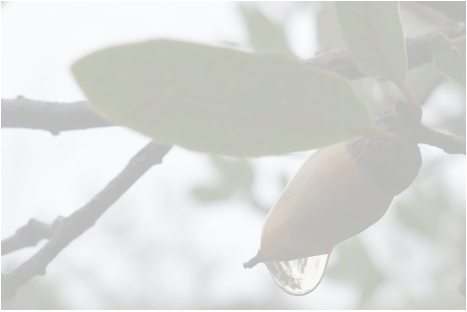Frequently asked questions
Are we certified and licensed?
Chris is a licensed and bonded landscape contractor (Permasystems Landscaping License #1105189) and holds rainwater harvesting certificates from both the Watershed Management Group (WMG), and the American Rainwater Catchment Systems Association (ARCSA).
How much does an initial consultation cost?
For new clients an initial consultation is $100 which normally lasts 1-2 hours. Visit Initial Consultation page for more information.
Do I need a permit to have one of your tanks?
In San Diego County you do NOT need a permit for water tanks as long as the tank is supported directly upon grade, the capacity does not exceed 5,000 gallons and the ratio of height to diameter or width does not exceed two to one, or the capacity does not exceed 10,000 gallons and the ratio of height to diameter or width does not exceed one and one-half to one. Link to County permit requirement language.
How do you install the tanks?
First, a solid pad is constructed. Bushman tanks are normally rolled or lifted into place. Their lightweight material makes this easy! Once in place the tank is connected to the gutter downspout, a first-flush system and a leaf filter are often installed between the downspout and the tank to exclude the dirtiest water and any sediment or debris.
Our tanks are installed following the City of San Diego Rainwater Harvesting Guide.
How long does it take to install a water tank?
It all depends on the location of the tank relative to your downspout and overflow. If the downspout and overflow are right next to the tank location it can take less than one day to install. Average installations of larger tanks normally take 2-3 days, smaller tanks 1-2 days.
What if I don't have gutters?
Find a reliable gutter installer in your area. We are happy to talk to the gutter installation folks to coordinate the installation of your rainwater harvesting system by insuring downspouts are placed in the correct locations.
How do I know if my roof is safe to collect rainwater?
The most common types of roofs are asphalt shingle, tile and metal. Tile and metal are the safest, you can use rainwater straight from them as long as you have an appropriate first-flush device. You don't even need the first flush if you are using the water only for landscaping or gardening. Rainwater from asphalt shingle roofs should never be drank but it is safe for perennial plants. A first flush device should be used if the water is going to be used for an annual garden.
How much water can I collect?
The rule is you can collect 600 gallons of water for every inch of rain that falls over 1000 square-feet of roof. The average roof in San Diego County is 2000 square-feet and averages 10 inches or rain annual - that equates to 12,000 gallons of water! The hills and mountains of San Diego can catch much more with their higher rainfall amounts.
Is it safe to use rainwater for landscaping?
Rainwater is safe to use no matter the type of roof you have if the water will be used for perennial plants. Asphalt shingle roofs and homes in cities with smog problems should use first-flush devices to keep the first bit of rain out of your tank and away from annual leafy vegetables.
Is it safe to use rainwater for drinking (potable) use?
Yes, rainwater can be safe to drink. Only drink water from roofs that are safe steel, tile or cement, and not asphalt shingle. We recommend the use of a filter before drinking. Be careful when drinking rainwater in areas with air pollution.
What are your water tanks made of?
Bushman tanks and most other tanks are made of polyethylene.
How long do the water tanks last?
Bushman water tanks have been around for decades and even their old tanks are still in perfect shape!
What are the maintenance requirements of your tanks?
We thoughtfully and specifically design, build and install our tanks to be ultra low maintenance. Keep your gutters clear of debris. If you have a first-flush device, it should be emptied after the first significant rain event of the season and after a large gap (about 1 month) in rain events. Every 5 years use the drain plug to empty out any silt or debris that have accumulated in the bottom of the tank and we recommend removing the lid of the tank for a visual inspection the ensure there are no large debris stuck in the tank. We are always happy to answer any questions you may have or perform this inspection for you.
Chris is a licensed and bonded landscape contractor (Permasystems Landscaping License #1105189) and holds rainwater harvesting certificates from both the Watershed Management Group (WMG), and the American Rainwater Catchment Systems Association (ARCSA).
How much does an initial consultation cost?
For new clients an initial consultation is $100 which normally lasts 1-2 hours. Visit Initial Consultation page for more information.
Do I need a permit to have one of your tanks?
In San Diego County you do NOT need a permit for water tanks as long as the tank is supported directly upon grade, the capacity does not exceed 5,000 gallons and the ratio of height to diameter or width does not exceed two to one, or the capacity does not exceed 10,000 gallons and the ratio of height to diameter or width does not exceed one and one-half to one. Link to County permit requirement language.
How do you install the tanks?
First, a solid pad is constructed. Bushman tanks are normally rolled or lifted into place. Their lightweight material makes this easy! Once in place the tank is connected to the gutter downspout, a first-flush system and a leaf filter are often installed between the downspout and the tank to exclude the dirtiest water and any sediment or debris.
Our tanks are installed following the City of San Diego Rainwater Harvesting Guide.
How long does it take to install a water tank?
It all depends on the location of the tank relative to your downspout and overflow. If the downspout and overflow are right next to the tank location it can take less than one day to install. Average installations of larger tanks normally take 2-3 days, smaller tanks 1-2 days.
What if I don't have gutters?
Find a reliable gutter installer in your area. We are happy to talk to the gutter installation folks to coordinate the installation of your rainwater harvesting system by insuring downspouts are placed in the correct locations.
How do I know if my roof is safe to collect rainwater?
The most common types of roofs are asphalt shingle, tile and metal. Tile and metal are the safest, you can use rainwater straight from them as long as you have an appropriate first-flush device. You don't even need the first flush if you are using the water only for landscaping or gardening. Rainwater from asphalt shingle roofs should never be drank but it is safe for perennial plants. A first flush device should be used if the water is going to be used for an annual garden.
How much water can I collect?
The rule is you can collect 600 gallons of water for every inch of rain that falls over 1000 square-feet of roof. The average roof in San Diego County is 2000 square-feet and averages 10 inches or rain annual - that equates to 12,000 gallons of water! The hills and mountains of San Diego can catch much more with their higher rainfall amounts.
Is it safe to use rainwater for landscaping?
Rainwater is safe to use no matter the type of roof you have if the water will be used for perennial plants. Asphalt shingle roofs and homes in cities with smog problems should use first-flush devices to keep the first bit of rain out of your tank and away from annual leafy vegetables.
Is it safe to use rainwater for drinking (potable) use?
Yes, rainwater can be safe to drink. Only drink water from roofs that are safe steel, tile or cement, and not asphalt shingle. We recommend the use of a filter before drinking. Be careful when drinking rainwater in areas with air pollution.
What are your water tanks made of?
Bushman tanks and most other tanks are made of polyethylene.
How long do the water tanks last?
Bushman water tanks have been around for decades and even their old tanks are still in perfect shape!
What are the maintenance requirements of your tanks?
We thoughtfully and specifically design, build and install our tanks to be ultra low maintenance. Keep your gutters clear of debris. If you have a first-flush device, it should be emptied after the first significant rain event of the season and after a large gap (about 1 month) in rain events. Every 5 years use the drain plug to empty out any silt or debris that have accumulated in the bottom of the tank and we recommend removing the lid of the tank for a visual inspection the ensure there are no large debris stuck in the tank. We are always happy to answer any questions you may have or perform this inspection for you.

